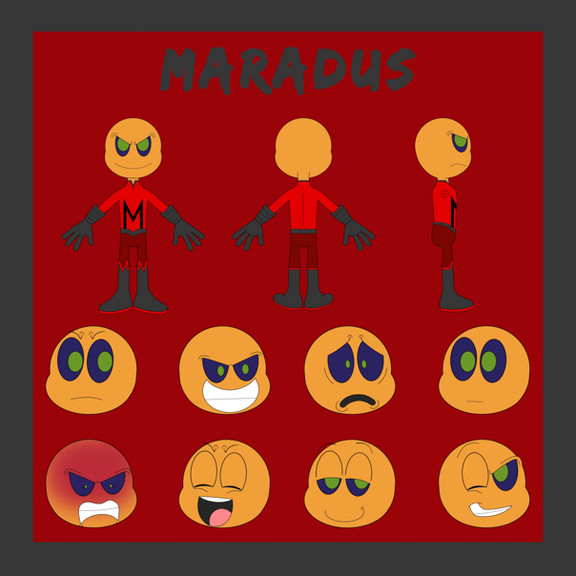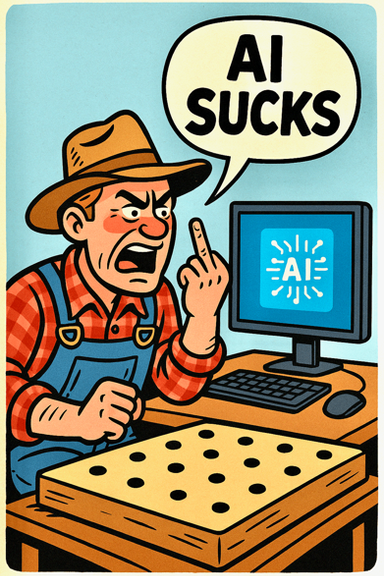HOME | DD
 DarlingMionette —
Quick and Dirty Color Theory
DarlingMionette —
Quick and Dirty Color Theory

Published: 2010-04-19 00:21:39 +0000 UTC; Views: 120505; Favourites: 5578; Downloads: 3397
Redirect to original
Description
My Quick & Dirty Color Theory Tutorial. That turned out to not be so quick >.> I got absorbed and explained a lot more than I originally intended. LMAO I hope you guys find it useful




More tutorials to come!
Related content
Comments: 485

I had learned that the difference between the red/blue/green primary color system and the red/blue/yellow system were due to how we observed them. The red/blue/green primaries are because we are looking at source light. The red/blue/yellow primaries are because we are looking at reflected light.
👍: 0 ⏩: 1

hrm. I've never heard that before, I'll have to investigate :3
👍: 0 ⏩: 0

nuu. red yellow and blue. green is made by combining blue and yellow. RBG (red blue green) is a color system used on computers to define digital color(along with CYMK, or cyan, yellow, magenta, and key (or black) which is used for printing), but the traditional color primaries are RBY. the reason there's more than one system is that there are two different ways of combining colors: additive and subtractive. printers use subtractive color methods and traditional paints use additive... so depending on which you're using, the color wheel changes.
👍: 0 ⏩: 0

yeah! it's very very useful.i realy like it! thanks
👍: 0 ⏩: 1

I'm glad you found it helpful!
👍: 0 ⏩: 0

This seems to contain everything I would ever need to know about colors to start painting. Thanks for sharing!
One more thing... (hope the question is not too noobish. xD but i'm clueless about colors)
before I even start choosing colors for my objects, the first thing I have to have in mind is my atmosphere right? And then choose colors according to any rule(triad, split complementary etc) based on that chosen atmospheric color as the main dominant color?
👍: 0 ⏩: 1

generally yes - the aim is to use the atmosphere to give your pic an "overall color scheme/look"- you want your color scheme to be cohesive - where it all looks like it's connected and part of the same picture.... when you don't factor in atmosphere or set a overall theme color, it can look really cartoony and fake. examples:
WITHOUT overall color: [link]
WITH overall color: [link]
skill/subject matter aside, the cohesive color schemed picture is more visually attractive than the one where the colors are just all over the place. It's easiest to choose your atmosphere as a main color for your picture because it will encompass the entire picture... secondary colors or complimentary would be in the figure or focus area of your image.. and then you'd use a contrasting color to make details within the focus area/figure stand out.
👍: 0 ⏩: 0

Awesome. Will definitely take this to heart. Thank you!
👍: 0 ⏩: 1

any program o.O it's general color theory. it applies to real life as well.
👍: 0 ⏩: 1

Ah. I just had to ask, because it doesn't specify what program you used, and it looks like Photoshop Creative Suites...which a lot of people don't have.
👍: 0 ⏩: 1

i've never used photoshop creative suites in my life XD
👍: 0 ⏩: 1

What program do you use?
👍: 0 ⏩: 1

Easy Paint Tool SAI usually, and some photoshop for minor adjustments.
👍: 0 ⏩: 1

Thanks for this tutorial. I hope I'll improve with colouring by this ^^
👍: 0 ⏩: 1

XD you're welcome~
👍: 0 ⏩: 0

Thank you so much for the work you put into this, I hope I can learn from you x'D.
👍: 0 ⏩: 1

This is awesome! Thanks for sharing your knowledge.
👍: 0 ⏩: 1


👍: 0 ⏩: 0

Thanks for the tutorial. It helps a lot!
👍: 0 ⏩: 1

You're very welcome!
👍: 0 ⏩: 0

Ohoho~ thank you so much for this! I learned a bit of new information again.
👍: 0 ⏩: 1


👍: 0 ⏩: 0

This tutorial really helps a lot. I studied color theory a few years ago and I also learned a very basic concept of reflective light in college but the saturation part really was an eye opener for me. Great job on this tutorial! By the way, where did you find that awesome color wheel used in the tutorial?
👍: 0 ⏩: 1

thank you! and I made the color wheel XD
👍: 0 ⏩: 1

I must learn how to draw one! A friend of mine said it's pretty easy. 
👍: 0 ⏩: 1

XD for the most part, it's just remembering the color opposites that makes it work :3 Red/Green, Blue/Orange, Purple/Yellow etc
👍: 0 ⏩: 1

Indeed. I was looking at other color theory tutorials around here and it's a very complex part of art. It can be very confusing, but I know I can learn it! I always forget the complementary colors.
👍: 0 ⏩: 0

Most Brilliant Tutorial about color theory, you have blown my mind!
👍: 0 ⏩: 1

The balls of paint look good, but the examples that were shown really look bad color wise...Why is that? The colors look dirty and not well together.
Thanks for the tut though!
👍: 0 ⏩: 1

I appreciate the feedback ^^
👍: 0 ⏩: 0

I'm a little bit confused when it comes to the changing hues part, when you have multiple colors. So, like, you have different colors in one picture (say, red, blue, and green) and you pick orangeish highlights, and purplish-pink for shading. Would you then use the same orange and and purplish-pink for the blue and green, or can you use their own analogous colors? (Like on the wheel up there, highlight for blue is yellowish-green and shading is purple; green is yellow and blue.) So basically I'm wondering if you have to stick to one color for highlights and shadings on multiple colors, or can the highlight and shading colors change around?
👍: 0 ⏩: 1

oh gosh, how to explain this easily... choose weather your highlights/shadows will be warm or cool to begin with, and keep that in mind as you paint - you can use certain colors to tie in different parts of the picture .. like maybe a blue back-light that goes over several elements of the picture to make it feel more cohesive. Also, you can do a slight "wash" or "tint" of a base color into all of your hues (like say you tinged everything a bit green) to further tie it all together. Here's some examples: [link] <- has green/red color scheme that has been mixed into all the shades of the picture - [link] <- orange light has been used to tie in several areas of the picture - [link] <- Warm highlights everywhere in the picture, but cold shadows.
👍: 0 ⏩: 1

So in the long run, it doesn't really matter, so long as it's consistent throughout?
Like, here are some examples of the warm highlights/cool shadows I've tried. (I'm not a painter, so most of my coloring is minimal; I just pick a color and set the layer to "Linear Burn" or "Overlay" depending. I don't mix that many colors - like you 3rd example - or put in a lot of detail. I also rarely ever have a real background.):
[link] < In this one the shading and highlights (which are rather half assed) were based solely on the color of the background, without adjusting for the red and yellow of the characters.
[link] < This one I colored the red character first, so I used an orange highlight and a purple shadow, then used those SAME colors for the blue one WITHOUT alternating to a different analogous color scheme based on blue or taking into account the other colors in the characters. There's no background to base the colors off, but I just pretended they were in a darker environment (a darkening room vs, say, a bright beach.)
[link] < For this one though, I changed the hues of the highlights and shadows based on the characters, having no background at all in mind. So the Totodile has an almost tealish green highlight with very slight purple shadows, and the Chikorita has a yellow highlight with tealish blue shadows. I feel like I did this right, but I don't really know if lightning works like this.
So my question really is, which of these is the most correct when it comes to how color interacts? Or are all three acceptable? (I referenced this tutorial for the last two pictures, and tried to keep the saturation levels consistent in both.) Especially the last one, because my work is most like that example.
I suppose my confusion comes from the fact that most color tutorials almost always say to pick your shadow and highlight colors from the background, but I don't normally use backgrounds. They also normally just stay with one color subject, like the blue ball in yours, or just one red apple in another, but most of my work has multicolored character in them.
I suppose in the long run, it doesn't really matter, cause like I said, I'm not a painter, but I really like this warm and cool, analogous colors method, and I want to use it more. I'm just not sure if I'm doing it right xD
👍: 0 ⏩: 2

"I suppose my confusion comes from the fact that most color tutorials almost always say to pick your shadow and highlight colors from the background, but I don't normally use backgrounds."
Think about it this way: There is always an implied background, because it's impossible to see the characters without light, so clearly there is some light in the background, and shadows would be pitch black and look strange if they were just floating in space (the reason shadows are lit up at all is bounced light from walls or the sky's atmosphere, etc.).
So, with characters without background, you might assume they're sitting in a white-walled room... except then the shadows would be very soft because white surfaces bounce light around so much (hence you hardly see any shadows during cloudy days). So let's say a middle grey room, with a white light. In that case, the shadows would simply be a less bright version of the lit up areas -- in other words, no hue or saturation shift. That's the default state of things.
In real life, there usually is a coloured background, so often we do see hue shifts, and drawings can look more realistic and intriguing if you factor this in. Also in real life, the light itself usually has a slight tint, as sorta mentioned in this comment thread. It's pretty hard to get a pure white light. Tungsten lights are yellow-orange, the sun is close to 'white' but very slightly yellow, florescent lights are slightly green, etc. The sky isn't a direct light, but it does bounce a LOT of light into shadows, hence they often look blue on a sunny day.
A couple tutorials you might find helpful in getting consistency and pleasing colours --
Light and shadow tints: [link]
How to make colour palettes more unified: [link]
👍: 0 ⏩: 1
| Next =>

































